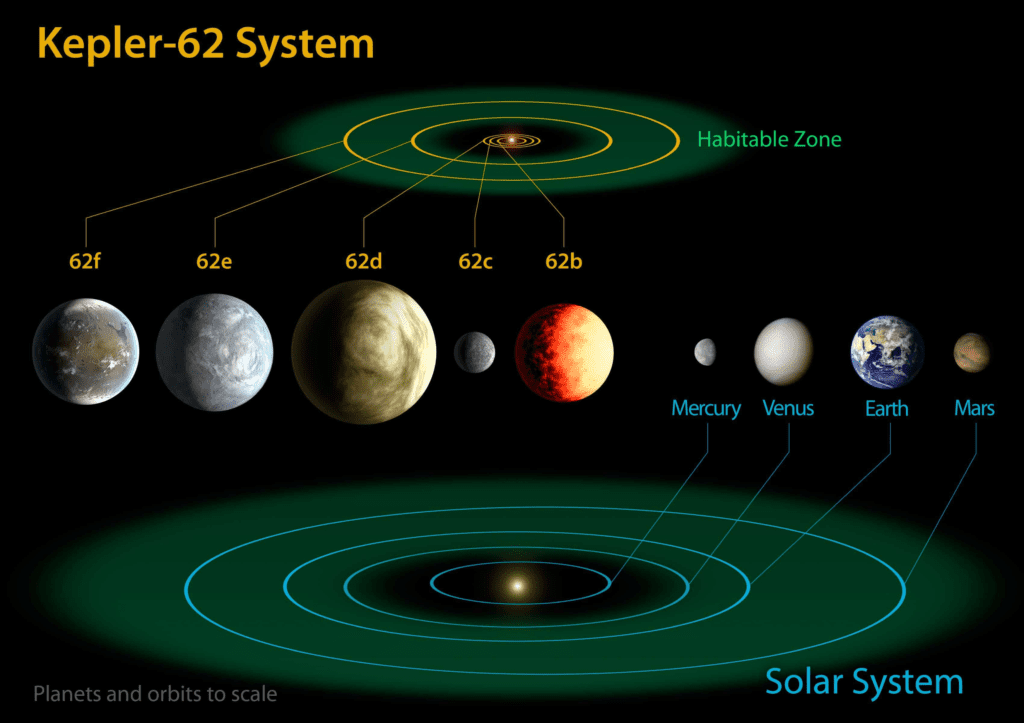Unlocking the secrets of the universe, one question at a time
Introduction
Have you ever gazed up at the night sky and pondered the vastness of the cosmos? The countless stars, galaxies, and planets, all seemingly teeming with potential for life, can fill us with awe and wonder. Yet, despite the immense expanse of the universe, we have found no signs of intelligent extraterrestrial life. This perplexing conundrum is known as the Fermi Paradox, and it challenges our fundamental understanding of the cosmos.
In this article, we will embark on a cosmic journey, exploring the Fermi Paradox in all its intricacies. We will delve into the historical context, scientific theories, and potential explanations for this baffling mystery that has intrigued scientists and thinkers for decades.
The Origins of the Fermi Paradox
Named after the renowned physicist Enrico Fermi, the Fermi Paradox emerged during a casual lunchtime conversation in 1950. Fermi, together with his colleagues, was discussing the possibility of intelligent extraterrestrial civilizations. The paradox can be summarized by Fermi’s question: “Where is everybody?” Given the vastness of the universe and the countless habitable planets it likely contains, why have we not encountered any signs of intelligent life?
The Great Filter Hypothesis
One of the leading theories that attempts to address the Fermi Paradox is the “Great Filter” hypothesis. This concept suggests that there exists a critical and extremely improbable step in the evolution of life that acts as a filter, preventing the emergence of advanced civilizations. This could be an event or barrier that significantly reduces the number of civilizations capable of interstellar communication.
Some proponents of the Great Filter theory argue that this filter could be a rare occurrence, such as the development of complex life from simple organic molecules. Others speculate that it might lie in the challenges civilizations face during their technological development, like the potential for self-destruction through nuclear warfare or environmental catastrophe.
The Drake Equation
To quantify the factors involved in the search for extraterrestrial intelligence (SETI), scientists have devised the Drake Equation. Named after astronomer Frank Drake, this formula estimates the number of detectable extraterrestrial civilizations in our galaxy. While it doesn’t directly address the Fermi Paradox, it provides a framework for understanding the variables at play.
The Drake Equation takes into account parameters like the rate of star formation, the fraction of stars with planets, the number of habitable planets per star, and the likelihood of intelligent life developing on those planets. Each of these factors contributes to our understanding of the potential abundance of extraterrestrial civilizations.
The Zoo Hypothesis
Another intriguing hypothesis related to the Fermi Paradox is the “Zoo Hypothesis.” This theory suggests that advanced extraterrestrial civilizations are aware of our existence but choose not to reveal themselves to humanity. It’s akin to humans visiting a wildlife reserve and observing animals without intervening in their natural habitat.
According to the Zoo Hypothesis, extraterrestrial beings might be closely monitoring Earth’s development and preserving our natural progression without interference. They may be waiting for us to reach a certain level of technological or cultural maturity before initiating contact.
The Rare Earth Hypothesis
The “Rare Earth” hypothesis takes a different approach to the Fermi Paradox. It posits that the conditions required for complex life, such as Earth’s, are exceptionally rare in the universe. Factors like the right planetary composition, a stable star, and a protective magnetic field may be far less common than previously thought.
Supporters of the Rare Earth hypothesis argue that the uniqueness of Earth’s environment significantly reduces the likelihood of finding extraterrestrial civilizations. In this scenario, the absence of contact with alien species is not surprising, as suitable conditions for complex life are a rare cosmic phenomenon.
The Fermi Paradox: A Multifaceted Mystery
As we examine these various hypotheses, it becomes evident that the Fermi Paradox is a complex and multifaceted mystery. It raises questions about the nature of life, the evolution of civilizations, and the challenges of interstellar communication. To explore this enigma further, let’s consider some of the potential explanations for the paradox.
Potential Explanations for the Fermi Paradox
1. Early Technological Development
One possibility is that humanity may be among the first intelligent civilizations to develop advanced technology in our galaxy. If other civilizations are still in their early stages of technological evolution, they might not have reached the point of interstellar communication yet. In this scenario, we could be pioneers in the cosmic timeline.
2. The Great Silence
The concept of the “Great Silence” suggests that there could be advanced extraterrestrial civilizations out there, but they remain silent for various reasons. Perhaps they have chosen to communicate through methods we cannot detect or comprehend, or they prioritize privacy and non-interference in the affairs of emerging civilizations.
3. Technological Limitations
Advancements in technology do not always lead to interstellar exploration and communication. It’s possible that civilizations face insurmountable technological challenges or resource constraints that prevent them from venturing beyond their own solar systems. The vast distances in space could be an insurmountable barrier for most species.
4. Catastrophic Self-Destruction
The Fermi Paradox could also be explained by the possibility that intelligent civilizations tend to self-destruct before reaching the capability for interstellar communication. This self-destruction could result from factors like nuclear conflict, environmental collapse, or societal instability. If this were the case, civilizations may be fleeting and short-lived in the grand cosmic scheme.
5. Hidden or Unrecognizable Signs
Perhaps extraterrestrial civilizations are attempting to communicate with us, but their methods are beyond our current understanding. They may use forms of communication or technology that we have not yet discovered, making their presence elusive. Alternatively, their signals could be so subtle or encoded that we have not recognized them as artificial.
6. Isolationism
Advanced civilizations may deliberately isolate themselves, avoiding contact with other species for fear of conflict or contamination. They might choose to remain hidden to protect their own interests or to avoid the potential risks associated with interstellar interactions.
7. Cosmic Catastrophes
Natural cosmic events like supernovae, gamma-ray bursts, or asteroid impacts could pose existential threats to advanced civilizations. These catastrophes could explain the absence of extraterrestrial signals if most civilizations are periodically wiped out by such events.
8. The Fermi Paradox as a Motivator
The Fermi Paradox itself could serve as a motivator for humanity and other potential civilizations. Knowing that we are alone or among the first could inspire us to explore the cosmos, ensure our long-term survival, and become the extraterrestrial civilizations we seek.
The Search for Extraterrestrial Intelligence (SETI)
The Radio Silence Conundrum
One of the primary methods for detecting extraterrestrial intelligence is through radio signals. Scientists have conducted extensive radio telescope surveys in the hope of picking up signals from advanced civilizations. However, despite decades of searching, we have not detected any conclusive evidence of extraterrestrial radio transmissions.

The lack of radio signals has intensified the Fermi Paradox and raised questions about whether advanced civilizations use different forms of communication or if they are intentionally avoiding radio broadcasts to remain hidden.
The Breakthrough Listen Initiative
In recent years, the Breakthrough Listen initiative has taken center stage in the search for extraterrestrial intelligence. This project, supported by prominent scientists and entrepreneurs, aims to revolutionize the field of SETI by expanding the search beyond traditional methods.
Breakthrough Listen employs some of the world’s most powerful radio telescopes to scan the skies for signals. Additionally, it explores new avenues of investigation, such as the search for technosignatures in the form of laser emissions or unusual cosmic phenomena.
Exoplanets: The Key to Discovery
The discovery of exoplanets, planets orbiting stars outside our solar system, has significantly contributed to the search for extraterrestrial life. The detection of potentially habitable exoplanets, known as “Goldilocks planets” within the habitable zone of stars, has fueled optimism that life may exist elsewhere in the universe.

NASA’s Kepler Space Telescope and the Transiting Exoplanet Survey Satellite (TESS) have been instrumental in identifying thousands of exoplanets, some of which may possess the conditions necessary for life. The study of these exoplanets, their atmospheres, and their potential habitability provides valuable insights into the Fermi Paradox.
The Impact of Astrobiology
Astrobiology: The Science of Extraterrestrial Life
Astrobiology is a burgeoning field of scientific research dedicated to the study of life beyond Earth. It encompasses a wide range of disciplines, including biology, chemistry, astronomy, and planetary science, all working together to unravel the mysteries of the cosmos and its potential for harboring life.
Astrobiologists investigate extreme environments on Earth that may serve as analogs for extraterrestrial habitats, such as hydrothermal vents on the ocean floor or the frozen lakes of Antarctica. By studying extremophiles—microorganisms capable of surviving in extreme conditions—scientists gain insights into the adaptability of life in the universe.
The Hunt for Biosignatures
One of the key objectives of astrobiology is the search for biosignatures, which are indicators of past or present life on other celestial bodies. These biosignatures can take various forms, including chemical compounds, microfossils, or patterns of isotopic ratios.
NASA’s Perseverance rover, which landed on Mars in 2021, is equipped with advanced scientific instruments designed to search for biosignatures in the Martian soil and rock. The mission represents a significant step in humanity’s quest to uncover the existence of extraterrestrial life.
Extremophiles: A Glimpse into the Possibilities
On Earth, extremophiles thrive in environments previously thought to be inhospitable to life. These resilient microorganisms inhabit places like acidic hot springs, deep-sea hydrothermal vents, and radioactive waste sites. The existence of extremophiles demonstrates the remarkable adaptability of life and raises the possibility of similar life forms existing on other worlds.
Astrobiologists are particularly interested in extremophiles because they offer insights into the potential for life to exist in extreme conditions found on other planets or moons in our solar system and beyond.
The Role of Space Exploration
Exploring Our Cosmic Backyard
Space exploration plays a pivotal role in addressing the Fermi Paradox. By venturing beyond our home planet and exploring the cosmos, we gather crucial data that can help us understand the prevalence of life in the universe.
Missions to celestial bodies like Mars, Europa (a moon of Jupiter), and Enceladus (a moon of Saturn) have provided tantalizing hints of possible habitable environments. These missions have also uncovered evidence of subsurface oceans, where life could potentially thrive.
The James Webb Space Telescope
Scheduled for launch in 2021, the James Webb Space Telescope (JWST) promises to revolutionize our understanding of the universe. This next-generation space telescope boasts advanced instruments that will allow scientists to study exoplanet atmospheres, hunt for biosignatures, and explore the cosmos in unprecedented detail.
The JWST’s capabilities are expected to significantly contribute to our search for extraterrestrial life and may provide answers to the Fermi Paradox by revealing the true extent of habitable worlds in our galaxy.
Conclusion: The Cosmic Enigma Persists
The Fermi Paradox remains an enduring enigma, challenging our understanding of the universe and our place within it. As we continue to explore the cosmos, conduct SETI research, and advance the field of astrobiology, we inch closer to unlocking the secrets it holds.
Whether the answer lies in the Great Filter, the actions of advanced civilizations, or the limitations of our technology, the Fermi Paradox serves as a beacon of curiosity, driving us to seek answers to one of the greatest questions of our time: “Are we alone in the universe?”
Join us on this cosmic journey as we explore the mysteries of the cosmos, one paradox at a time, and continue our quest to unravel the secrets of the Fermi Paradox.
For more information on the Fermi Paradox and related research, you can visit the following websites:
- Breakthrough Listen Initiative
- NASA’s Exoplanet Exploration Program
- James Webb Space Telescope (JWST) – NASA
- Astrobiology Institute – NASA
Unlock the secrets of the universe and stay informed about the latest developments in the search for extraterrestrial intelligence and astrobiology.

